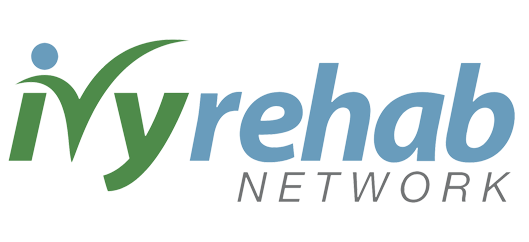Authors: Dr Michael O’Shea, Dr Dan Sorajja, Dr Holly Geyer
What is Cardiovascular disease?
Cardiovascular disease (CVD) is a group of health problems that affect the heart and blood vessels. It includes conditions like coronary artery disease (CAD), cerebrovascular disease (which includes strokes), peripheral artery disease (PAD), heart failure, and arrhythmias (problems with the heartbeat). Cardiovascular disease is the leading cause of death in the United States, causing about 800,000 deaths each year, which is 1 in every 3 deaths.
CVD causes a heavy burden on healthcare systems and affects people’s lives and finances. The biggest risk factors for developing CVD are already common in Americans. High blood pressure is present in 51% of Americans, diabetes in 16%, and obesity in 42%, and these are expected to become more common over time. We have effective ways to prevent and manage the issues that develop with CVD so it is important to discuss it with your care provider.
What is coronary artery disease?
Coronary artery disease (CAD) is the most common type of CVD. It happens when the coronary arteries, which supply blood to the heart, become narrow or blocked due to a buildup of fatty materials (atherosclerotic disease). CAD can cause chest pain (angina), heart attacks (myocardial infarction), and heart failure. In the U.S., CAD affects about 20.1 million adults. The rates of CAD are increasing because more people are becoming obese, developing diabetes, and having high blood pressure.
What is cerebrovascular disease?
Cerebrovascular disease, which includes strokes, is another major type of CVD. Strokes can be from bleeding (hemorrhage) and too little blood supply (ischemia) to the brain. Strokes are the leading cause of long-term disability and the fifth leading cause of death in the U.S. The rate of strokes is expected to rise from 3.9% in 2020 to 6.4% by 2050. This increase is due to an aging population and more people having risk factors like high blood pressure and atrial fibrillation (an irregular heartbeat).
What is peripheral artery disease?
Peripheral artery disease (PAD) occurs when the arteries in the legs become narrow or blocked, reducing blood flow. PAD affects 8 to 12 million people in the U.S., and many of these individuals also have CAD. PAD can cause symptoms such as leg pain and ulcers in the legs and feet. Severe cases can require cutting off (amputation) of parts of the feet and legs.
What is heart failure?
Heart failure is when the heart cannot pump blood effectively, leading to symptoms like shortness of breath, tiredness, and swelling from fluid buildup. The number of people with heart failure is increasing, and it is projected that 3.8% of U.S. adults will be affected by 2050. Heart failure is a major cause of hospital visits, disability, and death, making early detection and treatment very important.
What is an arrhythmia?
An arrhythmia is an irregular heartbeat, which can include skipping beats, as well as heart rates that are too fast (tachycardia) and heart rates that are too slow (bradycardia). Approximately 5% of the U.S. population has arrhythmias, with atrial fibrillation being the most common type. Different arrhythmias can cause problems such as stroke, heart failure, and death.
What causes cardiovascular disease?
Cardiovascular disease (CVD) most commonly happens because of atherosclerotic disease. Atherosclerotic disease is when fatty plaques build up in the walls of arteries, leading to poor blood flow to important parts of our bodies, such as the heart (causing coronary artery disease (CAD) and heart attacks, the limbs (causing peripheral artery disease (PAD) and the brain (causing stroke or cerebrovascular disease).
Heart failure can also occur with atherosclerotic disease, but can also be due to problems like heart valves not working properly, inherited genetic problems, and arrhythmias. Arrhythmias can develop because of heart attacks, heart failure, medications, poor health habits, and inherited genetic conditions, among other things, including normal aging of the body.
We cannot change some risk factors for CVD, including age, gender at birth, family history, and genetics. The biggest driver of developing CVD is age, especially for people over 65 years old. Generally, men are at higher risk for CVD when they are younger, but after menopause, women’s risk can become similar to or surpass that of men.
Risk Factors
High blood pressure
High blood pressure, known as hypertension, is a major risk factor that can be changed. It affects over 115 million Americans and is a big contributor to people having a stroke, CAD, and heart failure. Experts stress the importance of managing blood pressure to lower the risk of heart problems.
High cholesterol
High cholesterol, especially bad cholesterol (called LDL or low-density cholesterol), is another important factor. Guidelines suggest that lowering LDL can help prevent the buildup of plaques in the arteries. About 93 million adults in the U.S. have high cholesterol levels, which increases their risk of heart disease.
Diabetes and obesity
Diabetes and obesity are common risk factors, affecting 29 million and >100 million Americans, respectively. Both conditions significantly raise the risk of heart disease. Having diabetes can double the chances of developing heart disease, and obesity is linked to high blood pressure and unhealthy cholesterol levels.
Smoking and Vaping
Smoking, vaping, and use of other nicotine products, is a major risk factor. Quitting tobacco use is crucial for preventing heart disease, and can also help to prevent other diseases such as cancer and lung disease. For people who are using tobacco, the single most effective way to prevent cardiovascular disease is to stop.
Diet and exercise
Lack of exercise and unhealthy eating habits make the risk of CVD worse. Regular exercise and a heart-healthy diet are very important for preventing and treating cardiovascular disease. Experts recommend lifestyle changes as a key strategy to avoid heart problems.
What symptoms suggest cardiovascular disease?
Cardiovascular disease (CVD) can show different symptoms depending on the specific type of heart problem. Common symptoms include chest pain, shortness of breath, palpitations (feeling irregular heart beats), feeling very tired or not being able to exercise, and leg pain or swelling. Recognizing these symptoms early can help with faster diagnosis and treatment.
Chest pain
Chest pain is a common symptom of heart disease, and it can be a sign that the heart is not getting enough blood flow. People often describe this pain as tightness, heaviness, pressure, or squeezing, and it can spread to the neck, jaw, arms, or back. It usually happens when a person is active or feeling stressed. These symptoms usually go away within minutes with rest or a medicine called nitroglycerin.
Shortness of breath
Shortness of breath, or difficulty breathing, is another frequent symptom, particularly in heart failure and CAD. This can happen when someone is active or even when they are resting in more serious cases. Shortness of breath is a strong warning sign for serious heart events, like heart attacks or heart failure.
Palpitations
Palpitations, or feeling irregular heartbeats, are often linked to arrhythmias, which are problems with the heartbeat, like atrial fibrillation. These can make someone feel dizzy, lightheaded, or even faint.
Fatigue and exercise intolerance
Fatigue, or feeling very tired, as well as exercise intolerance, or not being able to exercise as much, are important symptoms of heart failure and other types of CVD. These feelings happen because the heart isn’t pumping blood effectively, which means the body isn’t getting enough oxygen.
Leg pain and swelling
Other symptoms can include claudication, which is pain in the legs when walking. This happens with peripheral artery disease (PAD) due to reduced blood flow to the legs. Swelling, also known as edema, is often seen in the legs, ankles, or feet in people with heart failure.
Sudden numbness, weakness, confusion or difficulty speaking
Symptoms of stroke, like sudden numbness, weakness, confusion, or trouble speaking, are signs of cerebrovascular disease. A common way of knowing if someone is having a stroke is to look for FAST signs – Face drooping, Arm weakness, Slurred speech, Time to call 9-1-1
Who treats cardiovascular disease?
Cardiovascular disease (CVD) is treated by a team of healthcare professionals who focus on the organs that are affected. This may include heart doctors (cardiologists), brain doctors (neurologists), and primary care providers. Managing CVD requires teamwork to handle different parts of the disease, from prevention to urgent care to long-term treatment. Cardiologists are key in diagnosing and treating CVD. They handle conditions like coronary artery disease, heart failure, and irregular heartbeats. Primary care providers often see patients first and help to prevent and identify early signs of heart disease. Preventive cardiologists work to slow down CVD by assessing and treating risk factors like high cholesterol and high blood pressure. Neurologists diagnose and manage cerebrovascular-related conditions, including strokes.
As heart disease becomes more severe, a larger team of care providers may be needed. The Heart Team approach will bring in specialized cardiologists and heart surgeons as needed for complex cases. Other healthcare workers like nurses and pharmacists also play vital roles by educating patients, encouraging healthy lifestyle changes, and helping ensure that patients take their medications as prescribed. This teamwork is essential for effective cardiovascular care.
© 1998-2024 Mayo Foundation for Medical Education and Research (MFMER). All rights reserved

Sign up for Updates
To stay up to date please provide your email address.
-
By giving us your email you are opting-in to receive news and promotions
Sign up for Updates
To stay up to date please provide your email address.
-
By giving us your email you are opting-in to receive news and promotions






